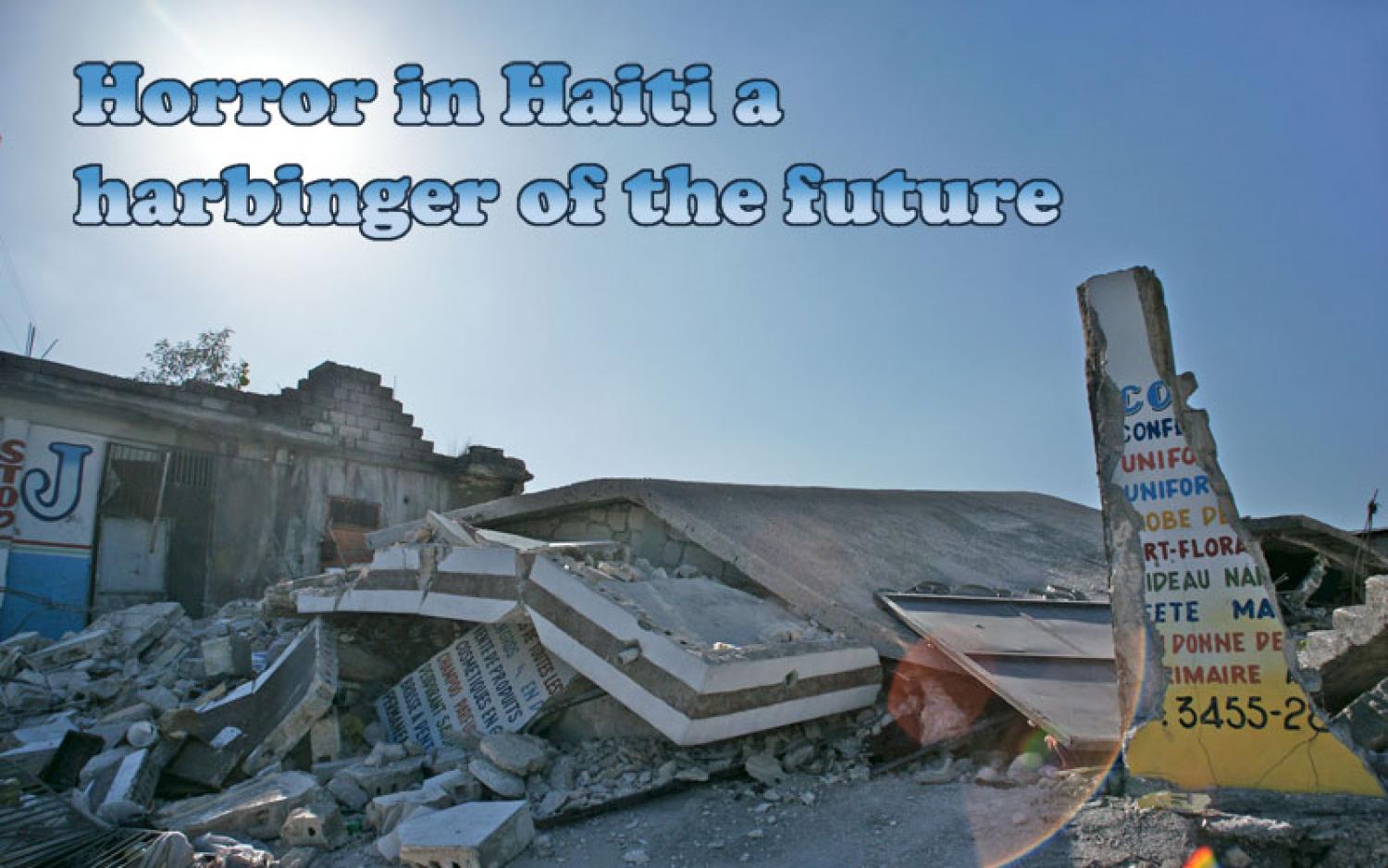
Building boom in ‘death zone’ shows scant regard for danger, CU professor contends
Within days of Haiti’s Jan. 12 earthquake, University of Colorado Professor Roger Bilham was among the first seismologists to survey the damage. He saw poorly constructed buildings transformed into deadly pancakes. Here and there, he saw a well-constructed building still standing, unscathed.
The contrast underscores one of Bilham’s points: poorly constructed houses in earthquake zones are “weapons of mass destruction.”
Haiti’s Jan. 12 earthquake, a 7.0-magnitude event, killed at least 230,000 people and devastated the destitute city of about 1.3 million. By contrast, San Francisco’s 6.9-magnitude earthquake of 1989 killed comparatively few: 67 of the city’s 800,000 people.
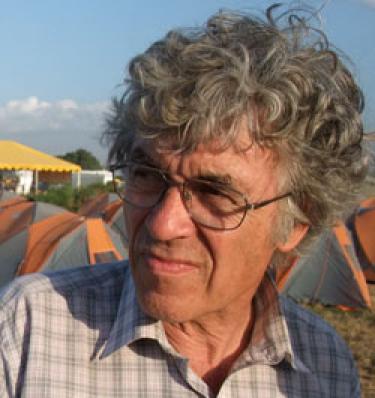 Bilham, a professor of geological sciences, explains the disparity: Port au Prince is one of the “worst-constructed cities in the world,” partly because of its extreme poverty and the absence of building codes.
Bilham, a professor of geological sciences, explains the disparity: Port au Prince is one of the “worst-constructed cities in the world,” partly because of its extreme poverty and the absence of building codes.
He and other experts saw this catastrophe coming. But he sees more and worse destruction on the horizon. Haiti’s earthquake was three times more fatal than any historical 7.0-magnitude quake and is the third most lethal earthquake of any magnitude in human history.
As devastating as the Haiti earthquake was, it foreshadows far-deadlier earthquakes likely in coming centuries.
As Bilham noted in the Bulletin of Earthquake Engineering last year, rapid population growth in earthquake-prone areas—combined with slapdash construction—has left millions more at significant risk of death.
Andrew Revkin of The New York Times characterizes Bilham as “part of a Greek chorus of seismologists and earthquake engineers who have been warning for a long time that some of the world’s biggest, fastest-growing cities are ‘rubble in waiting.’”
But the Greek chorus’ warnings go unheard or unheeded.
In the journal Nature, Bilham summarized what he saw in Haiti: “The reason for the disaster was clear in the mangled ruins—the buildings had been doomed during their construction,” he wrote. “Every possible mistake was evident,” he added, noting brittle steel, weak cement and substandard reinforcement rod work.
Bilham called for a new U.N. mission that would employ “teams of inspectors to ensure that people do not construct buildings designed to kill their occupants.”
In last year’s Bulletin of Earthquake Engineering article, Billham makes this prescient observation: “A slow but steady increase in deaths and economic losses from earthquakes is interspersed with remarkable catastrophes that remind us of how far the gap between knowledge and its application has widened in those countries most disadvantaged by earthquakes.”
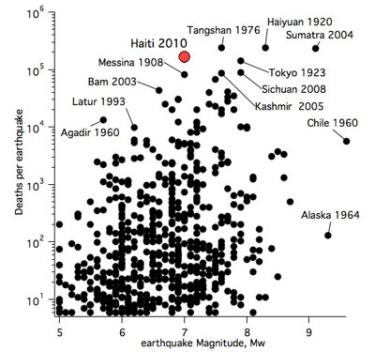
This graph illustrates the number of deaths vs. the magnitude of substantial earthquakes, and it emphasizes the point that quakes in large, poorly built cities are deadlier than those in large but better-built cities, notes Roger Bilham.
As Bilham notes, human population growth has driven the rising death toll, particularly as more people move into cities. (Collapsing buildings cause most earthquake deaths, and most buildings are in cities.) And in 2009, he notes, the world officially became an urban planet, with more people living in cities than in the country.
In the next half-century, the Earth’s population is expected to soar to more than 9 billion, requiring an additional 1 billion housing units. More dwellings will be constructed in a single generation than at any time in human history, Bilham notes.
The pace of growth has far exceeded human willingness to adapt to earthquake hazards.
Human population is gargantuan, and its growth has accelerated. Between 500 B.C. and 1000 A.D., human population doubled from about 120 million to 250 million. It took another 650 years for population to double again to 500 million. Humans’ ranks then doubled again in only 150 years, reaching 1 billion by about 1800. By 1975, population had doubled twice more, to 4 billion. Today, we number about 6.6 billion. Bilham notes that the intervals of population doubling times have changed from thousands of generations to a single generation.
Intervals between major earthquakes can be much longer, meaning that some populations might not understand the risk they face.
But the numbers tell only part of the story. Buildings can be engineered to withstand earthquakes, but developing nations have been reluctant or unable to impose and enforce such standards, despite the incremental additional cost being less than 15 percent.
“Few societies are willing to restrict the right of their citizens to construct in vulnerable settings,” Bilham writes.
Most of the fatal earthquakes in the last 1,400 years have occurred on 12 percent of the Earth’s surface area—a swath of land that extends between London and Tokyo, between the equator and the 45th parallel. About 85 percent of the world’s earthquake fatalities have occurred in the Alpine/Himalayan collision belt, between Europe and eastern Asia.
So far, the nations that have sustained the most fatalities include China, Japan, Italy, Iran, Indonesia and Turkey. But, as Bilham points out, more than a billion people now live in India, Pakistan, Nepal, Bhutan and Bangladesh, which are surrounded by active plate boundaries.
The world’s largest cities, supercities and megacities, are disproportionately located in “plate boundary settings” where tectonic strain rates (and earthquake risk) is high. More than 55 percent of supercities (those home to more than 2 million people) are within 125 miles of a plate boundary.
Almost two dozen of these cities are megacities, meaning they have populations of 8 million or more.
As of 2005, 79 supercities—with a total population of 472 million—existed in seismically vulnerable areas. About 68 percent of these populations are in the developing nations, Bilham notes.
Furthermore, with today’s population of 6.6 billion and with two-dozen cities larger than 8 milion, “we may reasonably expect an earthquake that could kill more than a million people every 100 years or so,” Bilham writes. Such an event has never happened before, but “never before have there been urban agglomerations of sufficient size to permit such a disaster.”
As world population keeps swelling, the prognosis only worsens.
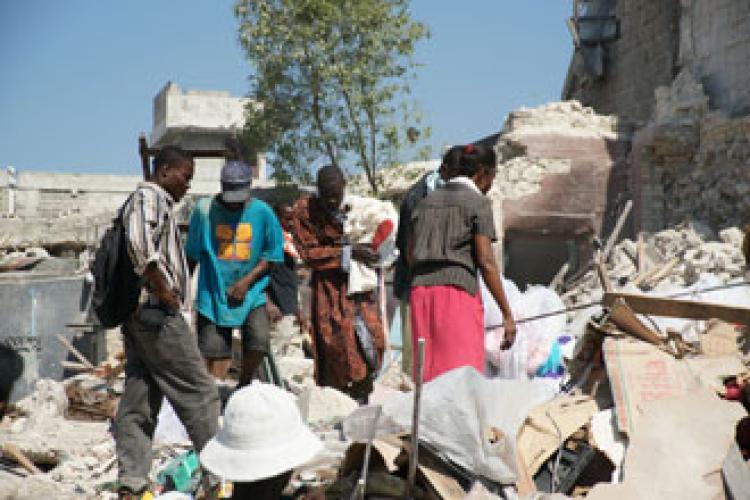
A group of Haitians picks up the pieces after the 7.0-magnitude earthquake that took place on Jan. 12, 2010. (photo credit: Roger Bilham)
“An appalling conclusion from this line of reasoning is that if we allow supercities to continue to grow from former villages and do nothing to make them less vulnerable to earthquake-shaking, we shall eventually attain … a continuous 12,000-kilometer-long swath of death and destruction.”
“The conclusion is obvious—that earthquake-resistant construction is essential,” Bilham writes.
But the widespread adoption of safer building standards is unlikely, Bilham suggests. There is no question that engineers can design buildings to withstand the strongest shaking, Bilham says. But societies have been willing to accept high levels of risk.
In the Alpine/Himalayan/Indonesian “death zone,” existing structures and those soon to be built “are more or less guaranteed to kill their occupants,” Bilham writes, adding:
“Earthquake-resistant construction is absent in these killer buildings, and despite the good intentions of the engineering community, there is no plan nor much hope of fixing these buildings before their collapse.”
Bilham attributes that pessimism to several human failures, including widespread ignorance, feckless politicians and pervasive corruption among builders and the government officials charged with overseeing the quality of their work.
“It should be appalling to the people of the world that … more than a 100 years after earthquake-resistant construction began to be understood and implemented by engineers, it is possible to write an article forecasting large numbers of future earthquake fatalities from the collapse of cities.”
During the last century, Bilham notes, most of the world’s buildings have been replaced at least twice. Additionally, the number of buildings has increased somewhere between four and six times.
“Underscoring this tragic lost opportunity is the observation that we still live in a world where deaths are expected to accompany large earthquakes near cities,” he continues.
That expectation shows a problem that needs to be fixed. But, “The time to have undertaken this fix was in the era of construction that started in about 1950,” when many buildings still in use began to be constructed.
The world has another three decades in its projected building boom, but it is unlikely that earthquake resistance will happen in the developing nations, where buildings are sprouting most prolifically.
He concludes: “Never has a generation of earthquake engineers been faced with such a grave responsibility to exercise their skills, both political and technical, as now.”
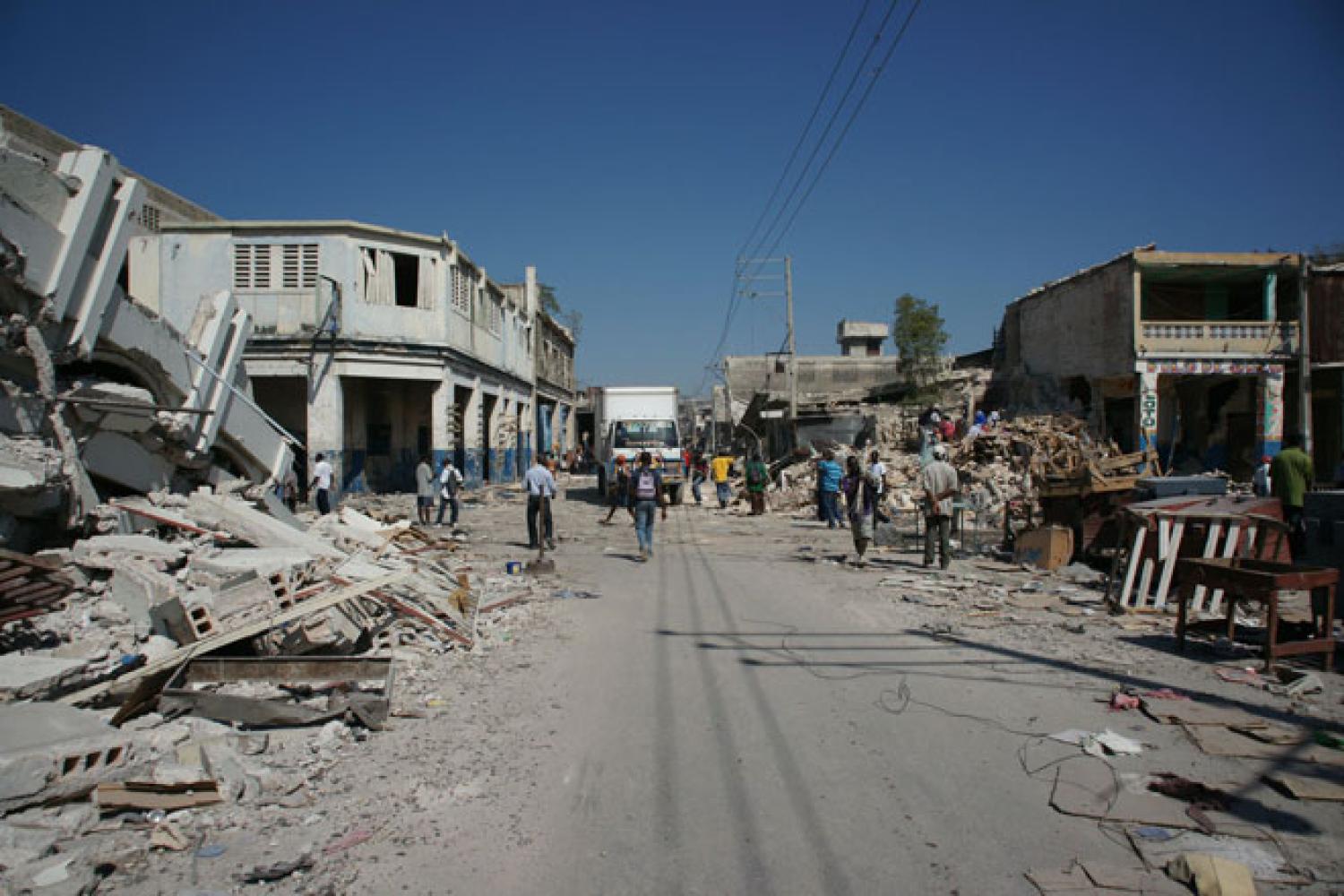
Streets lined with rubble mark the aftermath of an earthquake in Haiti. Lax building standards and poor preparation are to blame for the severity of the damage. (photo credit: Roger Bilham)



